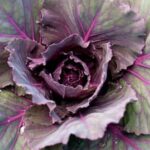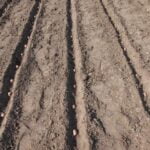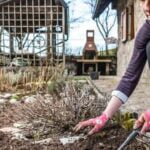Having a thriving vegetable garden is a rewarding experience, but it’s not without its challenges. One major challenge that gardeners face is dealing with pesky bugs and pests. Bug control is essential for maintaining the health and productivity of your vegetable garden, ensuring that you can enjoy a bountiful harvest year after year.
Bugs can cause significant damage to plants and crops if left unchecked. They can devour leaves, stems, and fruits, stunting growth and even killing off your beloved vegetables. Additionally, some pests are carriers of disease, posing a threat not only to your garden but also potentially to your overall health. Understanding the potential damage that bugs can cause is crucial in implementing effective control measures.
In this article, we will explore different strategies for getting rid of bugs in vegetable gardens. We will delve into identifying common garden pests, recognizing early signs of infestation, natural bug control methods, homemade recipes for bug repellents, utilizing biological pest control, implementing integrated pest management techniques, essential tools for bug-free gardens, and preventive measures for maintaining a healthy vegetable garden.
By understanding the importance of bug control and exploring various strategies, you’ll be well-equipped to keep those unwanted visitors at bay and nurture a flourishing vegetable garden.
Identifying Common Garden Pests
One of the most crucial steps in effectively managing bug infestations in vegetable gardens is being able to identify the common pests that can wreak havoc on your plants. By familiarizing yourself with these pests and their characteristics, you can promptly take action to prevent or control their population. Below are some of the most common bugs that infest vegetable gardens, along with detailed descriptions and information about the plants they tend to favor.
Aphids
Aphids are small, soft-bodied insects that come in a variety of colors including green, yellow, black, and brown. These pests can cause damage by sucking sap from plant tissues, stunting growth and causing deformities. They often colonize on young plants, buds, and new growth. Aphids have a wide range of favored vegetables including lettuce, kale, broccoli, and tomatoes.
Cabbage Worms
Cabbage worms refer to the larvae of several species of moths such as cabbage white butterflies. They are usually light green in color with velvety bodies and can blend well with plant leaves. Cabbage worms feed on plant leaves by chewing irregular holes in them. As their name suggests, they primarily target cabbage family crops like Brussels sprouts, kale, broccoli, and cauliflower.
Tomato Hornworms
Tomato hornworms are large caterpillars that mostly feed on tomato plants but can also target other plants in the nightshade family such as peppers and eggplants. These pests have a distinct appearance with green bodies adorned with white stripes or markings. They consume foliage and fruits rapidly which can lead to significant damage if not controlled early.
By understanding these common garden pests’ characteristics and preferred food sources, you will be able to implement targeted strategies for prevention or control measures in your vegetable garden. Keep in mind that while these are just a few examples, there are numerous other pests that can potentially disrupt the health and productivity of your garden. Therefore, it is crucial to have a comprehensive knowledge of the different pests in your area to effectively combat their presence.
Signs of Bug Infestation
In order to effectively control bugs in your vegetable garden, it is crucial to be able to recognize the early signs of bug infestation. By spotting trouble early, you can take prompt action and prevent extensive damage to your plants. This section will provide you with useful information on how to identify the signs of bug infestation in your vegetable garden.
Visual cues
One of the first things you should do when inspecting your vegetable garden for bug infestation is to carefully examine the leaves, stems, and fruits of your plants. Look for any visible signs such as discolored or chewed leaves, wilted plants, or abnormal growth patterns. Certain pests leave characteristic marks on plants that can help identify them. For instance, flea beetle damage often appears as small holes in leaves, while aphids may leave behind sticky residue known as honeydew.
Damage patterns
In addition to visual cues, it is important to pay attention to the specific damage patterns caused by different pests. Some bugs are leaf-chewers that will consume large portions of foliage, leaving irregularly shaped holes or entirely defoliated plants. Others are sap-suckers that cause stunted growth and yellowing of leaves due to nutrient deficiency.
Some pests may feed on plant roots and cause wilting or even death of the entire plant. Identifying these specific damage patterns can help you narrow down which pest might be causing the infestation.
Monitor regularly
Regular monitoring of your vegetable garden is essential for early detection of bug infestations. Take the time to inspect your plants at least once a week throughout the growing season. Keep an eye out for any changes or abnormalities and conduct a thorough examination if something seems off. Early intervention is often key in preventing further damage and protecting the health of your vegetable garden.
By recognizing visual cues, identifying damage patterns, and regularly monitoring your vegetable garden, you can be proactive in spotting the signs of bug infestations. Early detection allows for timely intervention and mitigates the potential damage that bugs can cause to your plants and crops. In the next section, we will explore natural bug control methods that can help keep your vegetable garden healthy without the use of harsh chemicals.
Natural Bug Control Methods
In recent years, there has been a growing concern about the use of chemical pesticides in vegetable gardens due to their potential harmful effects on human health and the environment. Thankfully, there are plenty of natural bug control methods that can help maintain a healthy and productive garden without relying on harmful chemicals. By adopting these methods, you can protect both your plants and the ecosystem while keeping your vegetable garden free from pests.
One effective natural bug control method is companion planting. This involves growing certain plants together that have beneficial relationships with one another. For example, marigolds are known to deter many common garden pests such as aphids, nematodes, and whiteflies. By interplanting marigolds with your vegetables, you can create a natural barrier against these pests. Other examples of effective companion plants include basil, which repels mosquitoes and flies, and mint, which deters ants.
Another natural bug control method is attracting beneficial insects to your garden. These insects act as natural predators to many common garden pests. Ladybugs, for instance, feed on aphids and mites while lacewings prey on caterpillars and beetles. To attract these helpful insects, you can plant flowers such as sunflowers and daisies or install insect houses that provide shelter for them.
Creating physical barriers is yet another effective method for keeping bugs out of your vegetable garden. This involves using materials such as floating row covers or netting to physically block insects from reaching your plants. Floating row covers are lightweight fabric covers that allow sunlight and rain to pass through while keeping bugs at bay. Netting acts as a barrier against flying insects like butterflies and moths.
| Natural Bug Control Method | Description |
|---|---|
| Companion planting | Growing certain plants together that have beneficial relationships, helping to deter pests. |
| Attracting beneficial insects | Encouraging natural predators to reside in your garden by planting flowers or installing insect houses. |
| Creating physical barriers | Using materials like floating row covers or netting to physically block insects from reaching plants. |
Homemade Recipes for Bug Repellents
One of the most effective ways to control bugs in your vegetable garden is by using homemade bug repellents. Not only are these DIY solutions cost-effective, but they also offer a non-toxic alternative to chemical-based insecticides. By making your own bug repellents, you can have peace of mind knowing that you are keeping your garden and produce free from harmful chemicals.
There are several recipe suggestions for effective homemade bug repellents using non-toxic ingredients. One popular recipe involves combining garlic and pepper spray. To make this repellent, blend one bulb of garlic with two tablespoons of hot pepper powder and three cups of water. Let the mixture sit overnight and strain it into a spray bottle the next day. This garlic and pepper spray can be applied directly to the foliage of plants that are prone to bug infestations.
Another DIY bug repellent recipe involves using neem oil. Neem oil is derived from the seeds of the neem tree and has natural insecticidal properties. To make this recipe, mix two teaspoons of neem oil with one teaspoon of dish soap and one quart of water in a spray bottle. Shake well before use and apply it to your vegetable garden, focusing on areas where bugs tend to congregate.
When applying homemade bug repellents, it is important to follow proper instructions. Make sure to apply them during calm weather conditions, preferably in the early morning or late evening when bugs are most active. It is also important to reapply the repellents after rainfall or watering your plants.
By utilizing these homemade bug repellent recipes, you can effectively fight back against pests without relying on harmful chemicals. However, it’s important to note that not every recipe will work for every type of bug or infestation. It may take some trial and error to find the best solution for your specific situation. Ultimately, incorporating these DIY solutions into your bug control regimen will help maintain a healthy and flourishing vegetable garden.
Biological Pest Control
In the quest for bug control in vegetable gardens, many gardeners are turning to biological pest control methods as a natural and effective solution. Biological pest control involves harnessing the power of nature’s own predators and beneficial insects to manage bug populations in the garden.
One of the key benefits of biological pest control is that it is environmentally friendly. Unlike chemical insecticides, which can have harmful effects on beneficial insects, birds, and other wildlife, biological methods work in harmony with nature. By attracting and supporting natural predators such as ladybugs, lacewings, and praying mantises, you can create a balanced ecosystem where pests are kept in check naturally.
To attract beneficial insects to your garden, it is important to provide them with the right conditions they need to thrive. This includes planting a diverse range of flowers and herbs that produce nectar or pollen-rich flowers. Beneficial insects also require a source of water, so providing shallow dishes filled with fresh water can help attract them to your garden as well.
Another approach in biological pest control is using microorganisms like Bacillus thuringiensis (Bt). Bt is a naturally occurring soil bacterium that produces proteins toxic to certain pests when ingested. It can be applied as a spray or dust directly onto plants affected by caterpillars or other insect larvae. The advantage of using Bt is that it specifically targets certain pests without harming beneficial insects or humans.
By utilizing these biological pest control methods, you not only protect your vegetable garden from damaging bugs but also contribute to overall ecological balance. Remember that creating a healthy habitat for beneficial insects takes time and patience. It may take several seasons before their populations become established enough to effectively control pests. But with perseverance and dedication to natural practices, you can successfully achieve bug-free vegetable gardening while protecting the environment at the same time.
Integrated Pest Management
Integrated Pest Management (IPM) is a comprehensive and sustainable approach to bug control in vegetable gardens. It emphasizes the prevention of pest problems through ecological principles and the minimum use of pesticides. IPM techniques aim to maintain a balance between pests, beneficial insects, and the overall health of the garden ecosystem.
One key aspect of IPM is proper monitoring. Regularly inspect your vegetable garden for any signs of bug infestation or damage to plants. Look for visual cues such as chewed leaves, holes in fruits, or wilting plants. By identifying pests early on, you can effectively intervene before the problem becomes unmanageable.
Establishing intervention thresholds is another important component of IPM. These thresholds determine when it is necessary to take action against pests. It is essential to understand that not all bugs are harmful and may coexist with beneficial insects that help keep pest populations in check naturally. Only when the pest population reaches a level that could cause significant damage should intervention be considered.
Ecological approaches are also emphasized in IPM strategies. This involves creating a welcoming environment for beneficial insects and natural predators that help control pests. Planting certain flowers or herbs alongside vegetables can attract these helpful insects, forming a diversified and balanced ecosystem within your garden.
By implementing integrated pest management techniques, you can reduce reliance on chemical pesticides while still effectively controlling bugs in your vegetable garden. This holistic approach ensures not only healthier plants but also contributes to overall environmental sustainability.
| IPM Techniques | Description |
|---|---|
| Monitoring | Regular inspection of the garden for signs of infestation or damage. |
| Intervention Thresholds | Determining when action should be taken based on pest population levels. |
| Ecological Approaches | Selective planting to attract beneficial insects and natural predators. |
Essential Tools and Preventive Measures
In order to maintain a bug-free vegetable garden, it is important to have the right tools and implement preventive measures. With the proper equipment and practices in place, you can effectively prevent bug infestations and protect your plants.
Must-Have Gardening Tools
Having the right tools can make all the difference in maintaining a bug-free garden. Here are some essential gardening tools that can help you effectively control bugs:
- Hand Pruners: These are useful for removing infected or damaged plant parts, such as leaves or branches, which may attract bugs.
- Garden Hoe: Regularly hoeing your garden beds helps to disrupt pest life cycles by exposing them to predators and eliminating weed hosts that attract pests.
- Garden Sprayer: Invest in a good-quality garden sprayer for applying natural insecticides or homemade bug repellents. This will ensure even distribution and maximum effectiveness.
- Row Covers: Use lightweight row covers made of thin fabric to physically deter pests from accessing vulnerable plants while still allowing sunlight, air, and water to reach them.
- Sticky Traps: Place sticky traps around your garden to attract and capture flying insects like aphids, whiteflies, and thrips.
Preventive Measures for Bug-Free Gardens
Apart from using the right tools, there are several preventive measures you can take to minimize the chances of bug infestations in your vegetable garden:
- Crop Rotation: Avoid planting the same vegetables in the same location year after year. This practice helps disrupt pest populations that have developed a preference for certain crops.
- Proper Hygiene: Regularly clean up fallen leaves, plant debris, and weeds from your garden beds to reduce hiding places for pests.
- Companion Planting: Planting certain flowers or herbs alongside your vegetables can help deter pests by either repelling them with their scent or attracting beneficial insects that prey on pests.
- Mulching: Apply a layer of organic mulch, such as straw or wood chips, around your plants. This helps retain soil moisture and temperature while suppressing weed growth, which can attract pests.
- Water Management: Overwatering can create favorable conditions for pests, so be mindful of your watering practices and only water when necessary.
By incorporating these essential tools and preventive measures into your gardening routine, you can create a bug-free environment for your vegetable garden. Remember that maintaining good garden hygiene, practicing crop rotation, and using the right tools are key to preventing pest infestations and ensuring the health and productivity of your plants.
Conclusion
In conclusion, maintaining a healthy and flourishing vegetable garden requires effective bug control strategies. Understanding the importance of bug control for the health and productivity of your garden is essential. Bugs can cause significant damage to your plants and crops, leading to reduced yields or even the death of your vegetables.
Identifying common garden pests is crucial in order to know your enemy. By familiarizing yourself with the characteristics of each pest and their favored plants, you can better anticipate and prevent infestations. Additionally, it is important to recognize the early signs of bug infestation in your vegetable garden. Visual cues and damage patterns are key indicators that allow you to take action before the problem worsens.
When it comes to bug control methods, natural and organic approaches are highly recommended. Techniques like companion planting, attracting beneficial insects, and creating physical barriers can be effective without the use of harmful chemicals. Homemade bug repellents using non-toxic ingredients provide another option for fighting back against bugs.
Biological pest control utilizes nature’s helpers by attracting and utilizing natural predators and beneficial insects. This method can be an efficient way to control bug populations in your vegetable garden while promoting a balanced ecosystem.
Implementing an integrated pest management (IPM) strategy is a holistic approach to bug control that incorporates proper monitoring, intervention thresholds, and ecological approaches. By adopting IPM techniques in your garden, you can effectively manage bugs while reducing reliance on pesticides.
Lastly, practicing preventative measures such as using appropriate gardening tools and equipment, maintaining proper hygiene, practicing crop rotation, and sanitation are also crucial for maintaining a bug-free vegetable garden.
By combining these various strategies discussed throughout this article, you will be able to maintain a healthy and flourishing vegetable garden where bugs are effectively controlled. The key takeaway is that understanding the importance of bug control and implementing the appropriate strategies will ultimately lead to bountiful harvests of delicious homegrown vegetables year after year.
Frequently Asked Questions
What is a natural bug repellent for vegetables?
A natural bug repellent for vegetables can be made with ingredients such as neem oil, garlic, and hot pepper. Neem oil, derived from the neem tree, contains compounds that act as insect repellents and disrupt pest growth cycles. Garlic has strong insect-repelling properties and can deter a wide range of garden pests.
Hot pepper sprays made by infusing vinegar or water with hot peppers can also help repel bugs from your vegetable plants. Additionally, planting companion plants like marigold or nasturtium can provide natural pest control by attracting beneficial insects that feed on pests.
Does vinegar keep bugs off vegetable plants?
Yes, vinegar can help keep bugs off vegetable plants to some extent. Vinegar is known for its acidic nature, which can repel certain insects like ants or caterpillars.
When diluted with water in a spray bottle and applied to the leaves of various vegetable plants, vinegar may help deter certain unwanted bugs. However, it’s important to note that vinegar is not effective against all types of pests and may not provide complete protection against more persistent garden insects.
What can I soak vegetables in to get rid of bugs?
To get rid of bugs on vegetables, you can soak them in a solution made from a mild dish soap or organic insecticidal soap mixed with water. The soapy water helps suffocate or disrupt the feeding patterns of soft-bodied insects like aphids, spider mites, or thrips that may be present on your vegetables. It’s crucial to make sure the solution is gentle enough to avoid damaging delicate produce but still effective at eliminating pests.
Thoroughly rinsing the vegetables after soaking them will ensure there are no residues left behind before consumption. Alternatively, if you have concerns about using soap directly on your food crops, you can look into using natural pest control methods such as introducing predatory insects, physical barriers like netting or row covers, or practicing good sanitation in your garden to reduce pest populations naturally.

If you’re looking to get into vegetable gardening, or are just looking for some tips on how to make your current garden better, then you’ve come to the right place! My name is Ethel and I have been gardening for years. In this blog, I’m going to share with you some of my best tips on how to create a successful vegetable garden.





